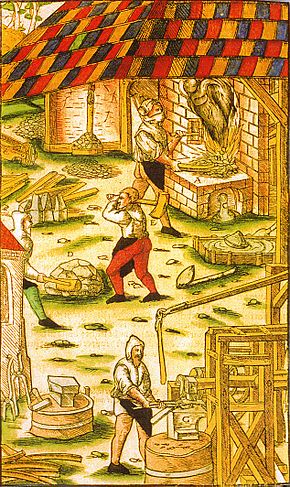
Back طاحونة مطرقية Arabic Самоков (металургия) Bulgarian Hamr Czech Hammermølle Danish Eisenhammer German Hámor (fémfeldolgozás) Hungarian Hamersmidse Dutch Hammerverk NB Kuźnica (zakład) Polish Hámor Slovak

A hammer mill, hammer forge or hammer works was a workshop in the pre-industrial era that was typically used to manufacture semi-finished, wrought iron products or, sometimes, finished agricultural or mining tools, or military weapons. The feature that gave its name to these workshops was the water-driven trip hammer, or set of hammers, used in the process. The shaft, or 'helve', of the hammer was pivoted in the middle and the hammer head was lifted by the action of cams set on a rotating camshaft that periodically depressed the end of the shaft. As it rose and fell, the head of the hammer described an arc. The face of the hammer was made of iron for durability.[2]
© MMXXIII Rich X Search. We shall prevail. All rights reserved. Rich X Search